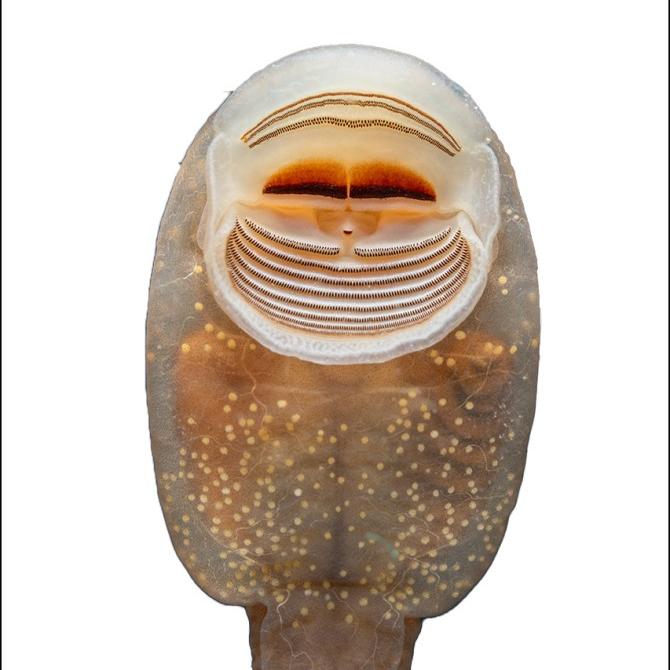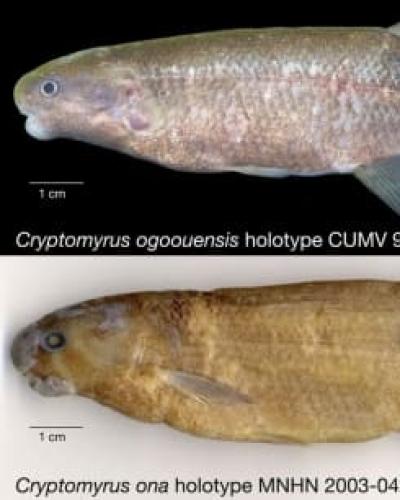Analysis of three unusual electric fish specimens collected over a 13-year period in Gabon led researchers at the Cornell University Museum of Vertebrates (CUMV) to describe two new species and an entirely new genus.
The discoveries are reported in the Feb. 8 issue of the journal ZooKeys.
Preserved DNA from the three specimens sequenced at Cornell University revealed they were close relatives but didn’t belong within known genus within the family of electric fish, called Mormyridae.
“That left us no choice but to describe them as a new genus,” said John Sullivan, the paper’s lead author and curatorial affiliate at the CUMV. The paper’s coauthors include Sebastién Lavoué, an assistant research scholar at the Institute of Oceanography at the National Taiwan University, and Carl Hopkins, professor emeritus of neurobiology and behavior at Cornell.
The researchers named the new genus Cryptomyrus, which comes from Greek words meaning “hidden fish” since they are rare in natural history collections, with the two new species called Cryptomyrus ogoouensis and Cryptomyrus ona.
“It’s unusual to describe a new genus and two species with only three specimens in hand, but no one knows when more specimens will become available and we felt this shouldn’t wait any longer,” said Sullivan.
The first specimen was collected in 2001 by Lavoué in the Nyanga River in Gabon. Lavoué deposited the specimen in the National Museum of Natural History in Paris, but sent a photo and DNA sample to Sullivan. Then Yves Fermon, ichthyologist with the Aimara Association, collected another fish in Gabon’s Ngounié River and sent it to Sullivan in 2013. Finally, in 2014, during an expedition to Gabon’s Ogooué River, funded by Gabon’s science agency CENAREST and The Nature Conservancy, Sullivan and colleagues caught a third fish. When he returned to Cornell, he struggled to identify his recent catch, but then remembered Lavoué’s specimen from 13 years earlier and started to put the pieces together.
“This is why we need natural history collections, to keep these specimens and their DNA samples in good condition, because it can take years or even decades to connect the dots,” said Sullivan.
The study’s authors described Cryptomyrus ogoouensis from the eponymous Ogooué River. They also determined that the two fish from the Ngounié and Nyanga rivers were of the same species, which they named Cryptomyrus ona, after Gabonese environmental activist and Goldman Prize winner Marc Ona Essangui.
More than 200 species of mormyrid fish live in fresh waters across Africa where they communicate with weak electric organ discharges or “EODs” produced from an organ in front of their tail. They also “electrolocate” using special receptor cells in their skin that allow the fish to navigate by sensing nearby objects in the water as distortions to their self-produced electric field.
EODs are often species-specific and the EOD of the Crytomyrus ogoouensis specimen recorded shortly after its capture proved unique among mormyrid fishes of Gabon. It will be archived in the Macaulay Library – the world's largest and oldest scientific archive of biodiversity audio and video recordings – at the Cornell Lab of Ornithology along with electric signals of many other species recorded by Hopkins and his associates from the 1990s until today.
Cryptomyrus is the first new genus described within the Mormyridae family since 1977.






